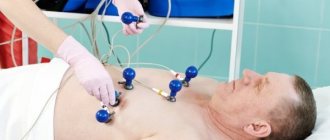Normal blood pressure for an adult is 120/80. Deviations of 10 points are allowed. When the indicators remain stable and the person feels good, this pressure is called working pressure.
If it changes sharply, it poses a danger to life, because it negatively affects the functioning of various organs and can result in death, and the cause can be either too low or too high values. Previously, such problems were characteristic only of older people, but now similar things can happen to young people.
Very high, as well as very low blood pressure is dangerous for humans
What it is?
The main organ of human life is the heart. This is a pump for pumping blood, supplying oxygen to all organs and systems of the body. For this reason, there are several phases in the functioning of the heart muscle:
- diastole;
- systole.
Based on the parameters of the functioning of the heart muscle in humans, the upper and lower limits of blood pressure are distinguished. Its sharp fluctuations are characterized by their ability to affect the body in a negative way: high and low pressure are unsafe for life.
If earlier the quantitative ratio of people suffering from high blood pressure (hypertension) was much higher than those with low blood pressure (hypotension), now the situation is changing dramatically. Heart and vascular diseases occupy one of the leading places in mortality throughout the world. The disease itself is also getting younger. If before this time older people suffered from coronary artery disease, now this disease is becoming younger.
Standard indicators
Blood pressure is the force acting on the blood vessels. The definition of “arterial” refers to vascular pressure parameters. There are:
- venous;
- capillary;
- heart pressure.
Standard blood pressure indicators for vital functions are 120/80 (maximum 140/90). If the value is too high, there is a tendency towards hypertension. Maximum - the upper pressure is systolic, the heart muscle contracts. Minimum – diastolic (relaxation phase).
To determine the optimal blood pressure value, it is not necessary to focus on established standards. A person may well have individual characteristics of blood pressure. If there are non-standard indicators, you should pay close attention to your health and consult a doctor.
Pulse is an indicator of blood pressure. The norm for humans is 60-80 beats. /min. By measuring your heart rate, you can learn about an upcoming problem. If the number of heartbeats increases after 2-3 hours after eating, food poisoning can be detected. During magnetic storms, a decrease in blood pressure is observed. In response to this, the heart rate increases to maintain optimal blood pressure levels.
Near-death state
Changes in blood pressure can also be observed during the process when a person dies. As a rule, death in a person occurs gradually, in several stages:
- preagony,
- agony,
- clinical death
- biological death.
The first three are considered to be the terminal stage of death. A person can no longer get out of it on his own: all body functions gradually fade away. Even if the cause that caused this condition disappears (loss of blood, electrical or thermal trauma), the process cannot be stopped without external help, the victim dies.
In the preagonal state, there is a decrease in the dying person’s pressure, the pulse is weak, breathing is rapid and shallow. It is this stage that is characterized by the lowest blood pressure in a person at death. After the terminal pause, the agony begins. In the agonal stage of death, the pressure increases by 30-40 mm, which is associated with an acceleration of heart contractions. However, such an increase is short-term. Only a doctor can say exactly what pressure at death at this stage, since the heart sounds are muffled and difficult to hear.
In the final stages, a person’s blood pressure drops to almost zero at death. After this, clinical and then biological death occurs.
Reasons for measuring blood pressure
The reasons for changing the parameters are as follows:
- Lack of ability of the heart muscle to function normally, as before.
- Changes in blood quality parameters. As you age, your blood thickens. The higher the degree of its density, the harder it moves through the vessels. The causes of blood thickening can be diabetes and autoimmune pathological diseases.
- Decreased elasticity of blood vessels. The causes of this condition are poor nutrition, exceeding the limit of permissible physical activity, and a certain list of medications.
- The formation of atherosclerotic plaques that appear in the bloodstream as a result of high concentrations of “bad” cholesterol in the body.
- A sharp decrease in the lumen of blood vessels, provoked by hormones.
- Incorrect activity of the endocrine system.
Terminal condition: signs of impending death
Before death occurs, that is, the biological shutdown of all human systems, natural and nature-provided changes occur in the body, one of which is a sharp decrease in readings on devices that record pressure (lower and upper). Also, indications of the functioning of systems and organs indicate the approach of biological death. There are general medical signs by which one can judge the beginning of the pre-death stage: lack of oxygen causes hypoxia (brain and tissues), the processes responsible for the inflow and outflow of blood are inhibited, and the following also occurs:
- change in the structure of the blood - its acidification;
- it becomes difficult for a person to breathe.
Critical indicators
Critical pressure is the value at which the main load falls on the heart and vascular system, which affects the condition. Sharp fluctuations in blood pressure lead to disruption of the cardiovascular system.
It is impossible to indicate the exact parameters of critical pressure for humans. An overestimated blood pressure value by 20-30 points from the maximum permissible is dangerous, more than 30 is a critical indicator. Here is the critical pressure for a person:
- below 100/60 – hypotension;
- above 140/90 – hypertension.
Deadly high blood pressure, when the tonometer reaches a value of 300, in a similar situation death occurs. Hypertensive crisis – 260 to 140. Critical low pressure – 70/40 or less.
The maximum permissible level provokes the occurrence of heart failure; if the symptoms are ignored, death occurs.
If a patient’s temperature rises against the background of a blood pressure failure, this is an alarming signal. Critical temperature and pressure are especially dangerous for people with coronary heart disease, diabetes, heart failure, atherosclerosis and arrhythmia.
Be careful, sometimes a combination of such symptoms accompanies myocardial infarction. And the temperature may rise slightly.
Age norms for blood pressure
The state of the body directly depends on age, physical activity, habits, and psycho-emotional stress. Typically, by the age of 50, a person already has a number of chronic diseases. As you age, your blood pressure also changes.
To determine blood pressure (BP), a special device is used - a tonometer. It records the maximum blood ejection at the time of contraction of the heart muscle - systolic pressure, and the minimum level - diastolic pressure.
There are certain age standards for acceptable blood pressure levels:
| Age | Systolic (upper) mm Hg. | Diastolic (lower) mmHg. |
| 20 | 110 -120 | 70-80 |
| 30 | 125-130 | 70-80 |
| 40-50 | 135-140 | 80-90 |
| Over 60 years old | 150 | 90 |
In a healthy person, a blood pressure of 120/80 mmHg is considered normal. Art., while the difference between systolic and diastolic indicators should vary within 30-55 mm Hg. Other values indicate disturbances in the functioning of the body. Frequent decreases or increases in values lead to pathological changes in the cardiovascular system and impaired cerebral circulation.
Fatal outcomes from sudden changes in blood pressure also occur in healthy people. At what pressure you can die will directly depend on a combination of negative factors, the condition of the blood vessels and the heart.
Why does blood pressure rise?
Pressure fluctuations don't just happen. Blood pressure values are influenced by factors that are not always related to the incorrect functioning of the body. Increased blood pressure - review of lifestyle and diet.
Factors that cause increased blood pressure:
- Dehydration. The norm for human fluid intake is 2 liters, the water must be clean. In the absence of the required amount of water, the blood thickens, the heart functions at the maximum permissible speed, which provokes an increase in blood pressure.
- Eating fatty foods with significant cholesterol levels. Cholesterol plaques settle on the walls, interfering with the movement of blood through the vessels.
- High salt intake.
- Having bad habits.
- Frequent heavy physical activity, as well as lack thereof. With increased loads, disruptions in orgasm are observed, with physical inactivity, the outflow of blood worsens, and the strength of the heart muscle weakens.
- Frequent stressful situations.
- Heredity, menopause, kidney failure, head injuries.
Causes of low blood pressure
It is influenced by the following factors:
- Stress, emotional tension.
- Mental and physical stress.
- Labor activity (underground work, in wet rooms, extreme conditions, workshops with high temperatures, with acids and alkalis).
- Diseases of the central nervous system, heart and blood vessels, adrenal glands, thyroid gland.
- Static.
Important! Hypotension is observed in athletes as a protective reaction in the presence of constant physical activity.
Late cadaveric phenomena and preservative processes [edit | edit code ]
Rotting [edit | edit code ]
Rotting is the decomposition of complex organic compounds under the influence of microorganisms into simpler ones. Ultimately, as a result of rotting, complete decomposition of proteins, fats, carbohydrates and other biological substances occurs with the formation of water, hydrogen sulfide, carbon dioxide, ammonia, methane and other compounds.
Mummification [edit | edit code ]
Mummification refers to late cadaveric phenomena of a preservative nature. The origin of the term “mummification” is associated with Egyptian mummies and means the drying of a corpse under natural conditions or using special methods. For the development of natural mummification, a combination of several prerequisites is necessary: dry air, good ventilation and elevated temperature. As a rule, corpses with poorly defined subcutaneous fat and the corpses of newborns are mummified.
Peat tanning [ edit | edit code ]
When in peaty soil, corpses can be peat-tanned. Peat tanning develops under the action of humic (sometimes called humic) acids. Under the influence of humic acids, the skin undergoes “tanning”, thickens, acquires a brown-brown color, and internal organs decrease in volume. Significant changes occur in the bones. Humic acids contribute to the leaching of the mineral base of bone tissue, dissolving it. In this case, the bones become similar in consistency to cartilage, are easily cut with a knife, and are quite flexible. An example of peat tanning is the so-called swamp people.
Fatwax [edit | edit code ]
Fat wax (saponification or saponification) also refers to late cadaveric changes. The necessary conditions for the formation of fat wax are high humidity and the absence of oxygen, which are most often found during burials in damp clay soils, when the corpse is in water and under other similar conditions. In conditions of high humidity and lack of oxygen, the putrefactive processes that have begun gradually stop, tissues and organs are saturated with water.
Skeletonization [edit | edit code ]
It is the process of the final disintegration of a corpse into the bones of the skeleton; as a result of rotting, soft tissues are destroyed, then ligaments. The corpse disintegrates into individual bones.
The danger of high blood pressure
An increased blood pressure value entails irreversible processes in the body. A significant portion of the hazardous impact occurs on the activity of the heart and blood vessels. Every year, about a million people die worldwide due to CVD disease, with the majority dying as a result of hypertension.
An increased blood pressure value is accompanied by hypertensive crises - sharp fluctuations in pressure to a critically dangerous level.
Hypertensive crisis is a sudden increase in blood pressure to 180/110 or more. If after 5 minutes the pressure does not change, you need to urgently take measures to reduce the levels. A long stay in such a state is fraught with the development of complications: stroke, swelling in the lungs, acute failure of the heart. In view of this, priority assistance is provided immediately.
Hypertensive crisis occurs:
- Uncomplicated. There are no serious disruptions in the performance of the heart muscle, brain, or kidneys. After several hours of taking the medications, blood pressure normalizes.
- Complicated. Its occurrence is extremely rare. In this condition, the digestive organs come under attack.
During a hypertensive crisis, a sharp expansion of blood vessels and their ruptures are observed. The patient complains of migraines and pain in the heart, fever, nausea, and vision deterioration. Complications that pose a particular mortal danger include heart attack and stroke. In the chronic course of hypertension, vital organs - the heart, kidneys, eyes - are affected:
- a stroke is accompanied by a sudden deterioration in blood circulation in the structures of the brain, paralysis occurs, which can remain for life;
- renal failure - metabolic failures, the kidneys cannot perform their functions - urine formation;
- When the eyes are affected, vision deteriorates and hemorrhage is observed in the eyeball.
When diagnosing hypertension, traditional treatment methods should not be excluded. On the contrary, they are used as an addition to the general course of therapeutic treatment, and their use is agreed upon with the therapist. Diuretic preparations are used in combination with drug treatment. Chopped cranberries with honey help a lot.
Early cadaveric phenomena [edit | edit code]
Early cadaveric phenomena are characterized by their appearance several hours after the onset of biological death, and they, as a rule, gradually disappear after a few days, giving way to late cadaveric changes.
Corpse desiccation [ edit | edit code]
Cadaveric drying affects mainly those areas of the human body that were moisturized during life - the mucous membrane of the lips, the cornea and the white membranes of the eyes, the scrotum, the labia minora, as well as areas of the skin devoid of epidermis - abrasions (including post-mortem ones), the edges of wounds , strangulation groove and the like.
The time of appearance and speed of development largely depend on the state of the environment. The higher the temperature and lower the humidity, the faster and more pronounced the drying of the corpse occurs. Within 2-3 hours, under normal conditions, clouding of the corneas is observed, yellow-brown areas appear on the white membranes of the eye, called “Larchet spots.” When carrying out resuscitation measures or when the epidermis is damaged after the onset of biological death, post-mortem abrasions may occur; during the drying process, they can take the form of a “parchment stain”. By the end of the first day, the dried areas become dense to the touch and acquire a yellow-brown or red-brown color. However, they may be mistaken for intravital injuries. This should be especially remembered when examining the transitional border of the lips, reflexogenic zones - the scrotum, labia and other areas of the skin. It is possible to differentiate between intravital and postmortem abrasions based on the following characteristics:
- The drying spot is localized on the superficial areas of the skin or mucous membranes and is absent in the depths of the folds.
- On a cut in the underlying tissues of the intravital abrasion (fatty tissue, the skin itself), hemorrhages can be detected, which are absent in the parchment stain.
- If you put damp gauze or cotton wool on the drying area, then after 30 - 60 minutes the skin or mucous membrane will again acquire its previous properties and will not differ from the surrounding tissues, and the intravital abrasion will retain its morphological characteristics.
- Histological examination of tissues reveals signs of intravital damage.
Thus, cadaveric desiccation does not provide significant forensic information about the duration of death, but at the same time allows one to assess the lifetime of the damage.
Posthumous cooling [edit | edit code]
Cooling of the corpse is due to the cessation of endogenous heat production due to the cessation of metabolic processes after the onset of biological death. The first signs of cooling of the corpse to the touch are determined 1-2 hours after death in the distal parts of the body. After 4-5 hours, you can palpate to determine a decrease in temperature in areas of the body under clothing; in the armpits, a decrease in temperature is determined after 6-7 hours. Under normal conditions (at a temperature of 18 ° C), a corpse in clothes cools by approximately 1 degree Celsius per hour, so after 17-18 hours the body temperature will become equal to the ambient temperature. Currently, instrumental methods for determining the temperature of a corpse (thermometry, electrical thermometry) and mathematical methods for estimating the cooling rate are used. Despite the obvious successes, the problem of establishing the duration of death based on the degree of cooling of the corpse is still relevant and requires further in-depth research.
Rigor mortis (Rigor Mortis) [edit | edit code]
Represents the contraction of muscle fibers and the specific changes that follow. The external manifestations of this process can be divided into groups, depending on the type of muscle in which rigor mortis occurs.
- In the striated muscles, external signs of rigor are manifested in the form of its rigidity, delineation and relief. The flexor muscles are more powerful than the extensors, and therefore the upper limbs flex at the elbow and hand joints, and the lower limbs bend at the hip and knee joints. With fully developed rigor mortis, the corpses take a position reminiscent of a wrestler or boxer (the upper limbs are semi-bent at the elbow joints, somewhat elevated and adducted, the hands are semi-compressed, the lower limbs are semi-bent at the hip and knee joints). This position is most pronounced under the influence of high temperature, when muscular rigor of the corpse is combined with thermal destruction of muscle tissue.
- Rigidity of smooth muscles is manifested by the so-called “goose bumps”, contraction of the nipples and sphincters, which leads to the release of excreta. When death occurs, the heart is in a state of diastole.
- Subsequently, myocardial rigor develops, which leads to post-mortem systole and squeezing out blood from the ventricles of the heart. Due to the fact that the left side of the heart is more powerful than the right, more blood remains in the right ventricle than in the left. After rigor mortis resolves, the heart returns to diastole.
- Rigor of the smooth muscles of the gastrointestinal tract forms pronounced, emphasized folds of the mucous membrane and can lead to movement of contents.
- Rigidity of the pregnant uterus can lead to expulsion of the fetus and the so-called “coffin birth.”
Low pressure danger
Hypotension affects the condition. When it is present, the organs experience a lack of blood and there is insufficient blood supply to the body. Critical lower pressure is equated to dangerous, when oxygen does not enter the main vessels, and there is poor blood supply to organs. Poor blood circulation in the brain increases the chance of an ischemic stroke.
Hypotension affects well-being: the patient complains of malaise, fatigue, and impotence. Heart attack, stroke, heart and vascular diseases are a complicated course of hypertension and hypotension. A large number of examples confirm the possibility of transition from hypotension to hypertension. This is explained by the fact that pathological changes are observed in the vessels. This type of hypertension is very difficult for the body to tolerate than other cases.
Important! Hypotension is observed at the initial stage of pregnancy. Dehydration requires drinking a lot of fluids, but this affects the child's condition.
When should you call emergency services?
Both hypertension and hypotension require emergency care . Therefore, in case of a sharp and sudden rise (fall) in blood pressure to individual values, it is necessary to call qualified medical assistance, otherwise this may lead to irreversible consequences.
A sharp change in blood pressure, both upward and downward, is dangerous. When these conditions are identified, emergency assistance is required, which can only be provided by qualified specialists. Therefore, if hypo- or hypertension is detected, an ambulance should be sought, where normal blood pressure numbers will be achieved through the administration of medications.
Actions of the patient in the presence of dangerous pressure
Hypertension and hypotension require mandatory treatment. The earlier therapy is started, the better for the person. Sudden drops in high blood pressure are undesirable - this harms the body and poses a danger to humans. For treatment, drugs with a combined type of action are used, the main task of which is to reduce side effects and increase benefits. The modern pharmaceutical industry is engaged in the production of drugs that reduce high blood pressure for 24 hours after a single dose.
General recommendations for reducing critical pressure:
- Reduce salty intake.
- Avoid drinking coffee, tea, and alcoholic beverages.
- Eliminate animal fats and sugar.
- Increase the amount of fresh fruits and vegetables you consume.
- Consume foods containing large amounts of potassium and magnesium.
Usually the patient knows what the critical low pressure is for him and can quickly increase it at home. To increase vascular tone, there is no point in using pills. Coffee is considered an affordable remedy for quickly raising blood pressure. Preparations containing caffeine - Citramon, Pyramein, Askofen.
Cinnamon water can quickly increase low pressure - 1 teaspoon of cinnamon is poured with boiling water, and 2 teaspoons are drunk to increase pressure. For hypotension, it is necessary to use drugs with a combined spectrum of action - a combination of ACE inhibitors and potassium antagonists, an ACE inhibitor and a diuretic.
People with problematic blood pressure are wondering what pressure is considered critical and which conditions are worse: hypertension or hypotension? Any violation poses a danger. If pressure surges are systematically observed, you should immediately seek qualified help. After a thorough examination of the patient, the doctor will prescribe the necessary medications and preventive measures.
Here's what causes blood pressure problems:
- heredity;
- stress;
- excessive physical activity;
- weather change;
- passive lifestyle;
- bad habits;
- unbalanced diet;
- heart and vascular diseases.
Examination for strangulation asphyxia
The following types of strangulation asphyxia are distinguished:
- Hanging.
- Strangulation (strangulation) with a noose.
- Strangulation (strangulation) by hand.
- Strangulation with a hard object.
When hanging, the mechanical impact on the organs of the neck is exerted by the loop under the influence of the gravity of the entire human body or its parts. Hanging may be complete or partial. The loops used for hanging are divided into hard (cables, wire, chains, etc.), semi-rigid (ropes, belts, etc.) and soft (towels, scarves, rags, ties, etc.). In rare cases, when hanging, the neck is compressed not by a noose, but by a blunt object (the rung of a ladder, tree branches, the back of a chair, etc.). The location of the hinge assembly can be lateral, posterior or anterior. The typical position of the node is posterior. Lateral and anterior positions are much less common.
Strangulation (strangulation) with a noose is carried out by tightening a noose around the neck using the hands or some kind of mechanism. In this case, the traumatic effect on the organs of the neck is due to the force of the attacker or the mechanism. The deceased could have tightened the noose around the neck independently using a device such as a twist or the handle of a spoon. Suicide by noose strangulation is rare. Most often, noose strangulation is a type of murder. However, accidents are also possible when parts of clothing (scarf, tie, etc.) get caught in various rotating mechanisms.
An important sign of mechanical asphyxia during hanging and strangulation (suffocation) with a noose is a strangulation groove - a mark from the pressure of the noose on the neck (in rare cases, from a blunt object). As a result of the impact of the loop material on the neck, the epidermis is desquamated. After removing the loop, the damaged areas on the skin become denser and dry out. Hemorrhages may form at the site of the strangulation groove. During the examination of asphyxia in the case of hanging or strangulation with a noose, special attention is paid to the description of the strangulation groove, in particular, its following signs are indicated:
- Location (indicates the part of the neck in which the groove is located).
- The nature of the furrow (single, double, closed, open, etc.).
- Direction (horizontal, upward, etc.).
- Dimensions (width, depth).
- Characteristic features (density, description of the bottom and edges of the furrow).
- The presence of hemorrhages around the strangulation groove.
- Intravital (or postmortem) nature of the furrow.
The strangulation groove that appeared intravitally has more pronounced signs. While the post-mortem furrow may be barely noticeable. Establishing the intravital (or postmortem) nature of the occurrence of a strangulation furrow during an examination for asphyxia is of great importance for determining the cause of death, since hanging of the body is often performed posthumously - to simulate suicide or to mask another cause of death, for example, strangulation with a noose.
When strangulated by hand, death occurs from compression of the carotid arteries, veins and nerves, as well as as a result of reflex cardiac arrest. For strangulation, fingers and hands are used, less often - forearms and shoulders. Asphyxia can occur from pressure with the forearm on the neck of a lying person or from compression of the neck in the elbow bend (between the shoulder and forearm), usually with the other hand fixing the bend. Strangulation with a hard object involves traumatic impact on the neck with a blunt, hard object. Sometimes suffocation occurs as a result of an accident when the neck gets caught in mechanically closing doors. Examination of asphyxia in such cases pays special attention to the marks left on the neck in the form of hemorrhages that take the shape of the killer’s fingers or the shape of the object with which the strangulation was carried out. Based on the nature of the traces, the method of murder can be determined. Suicide through manual strangulation is impossible, since the person quickly loses consciousness and the arm muscles relax.
Symptoms of high and low blood pressure
Hypertension:
- mild and moderate increase (severe form of hypertension can occur hidden if its development was gradual, without the presence of sharp jumps in blood pressure);
- pressing pain in the back of the head;
- noise in ears;
- stiffness of movements;
- chest pain;
- anxiety.
Hypotension:
- lethargy;
- drowsiness;
- rapid fatigue;
- decreased level of performance;
- aching headache;
- frequent fainting.
Important! Symptoms appear when the weather changes. With orthostatic hypotension, there is sudden weakness with the presence of floaters and darkening before the eyes.
Classification of types of mechanical asphyxia used during examination of asphyxia
Modern forensic medicine identifies the following types of acute oxygen deficiency caused by external causes (mechanical asphyxia):
- Strangulation asphyxia (strangulation with a noose or hands, hanging).
- Compression asphyxia (occurs in the case of mechanical compression of the chest and abdomen).
- Obstructive asphyxia (caused by obstruction of the airways by a foreign body, drowning, or intentional closing of the nose and mouth).
- Aspiration asphyxia (occurs as a result of inhalation or accidental entry into the respiratory tract and lungs of blood, stomach contents, viscous or granular substances).
- Asphyxia in a confined space.
The first two types of asphyxia (strangulation and compression) are classified as types of asphyxia that occurs as a result of compression of the victim’s throat or body. Obstructive and aspiration asphyxia occurs when the airways are closed. Asphyxia in a confined space is caused by a fatal decrease in the oxygen content in the air that the victim was breathing.
Hypertension or hypotension?
Patients often wonder which of the critical pressure values is worse. In a comparative analysis of the conditions, it is obvious that in terms of the dangerous consequences of complications, hypertension is worse than hypotension. The ideal value is normal blood pressure according to medical experts.
Achieving ideal pressure parameters for hypotension is possible with the use of tonic drinks containing caffeine, ginseng and other stimulants. For hypertensive patients, systematic consumption of special medications that control blood pressure is mandatory.
Most of the causes of sharp fluctuations in critical blood pressure can be eliminated on your own, which will make it possible to preserve your health for a longer time. A properly selected, balanced diet, activity and physical activity, a calm attitude towards events in life, avoidance and elimination of stressful situations is the path to health and longevity. Compliance with these simple rules will normalize blood pressure levels.
Dependence on the speed of death [edit | edit code ]
Regardless of the mechanism of biological death, it is always preceded by the moment of clinical death. Depending on the speed of death, agonal death and acute death are distinguished. Agonal death is accompanied by a fairly long terminal period. In acute death, the terminal period is short or practically absent (a typical example of acute death is death due to mechanical asphyxia). The onset of death is always preceded by terminal conditions that influence the nature of postmortem changes.











